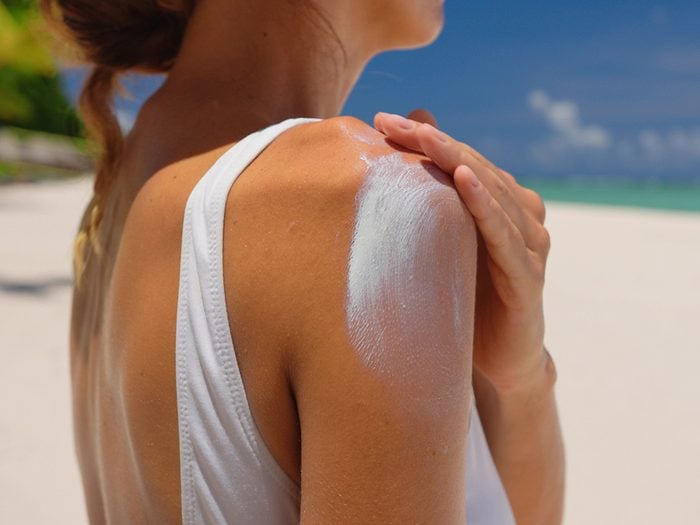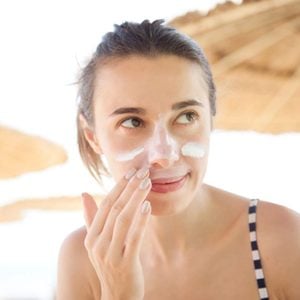If You Haven’t Switched to Mineral Sunscreen Yet, This Might Convince You

Brush up on the potential dangers of oxybenzone—a key ingredient in certain chemical sunscreens.
In recent years, the safety of oxybenzone, a chemical widely used in sunscreens sold in North America (it’s also permitted in Europe but at a lower percentage), has been in question. Like other chemical UV filters, oxybenzone absorbs UV rays and releases them as heat. This chemical reaction stops ultraviolet radiation from reaching skin cells and causing the DNA damage that can end up causing skin cancer.
A small 2019 study published in JAMA found evidence that oxybenzone is absorbed into the blood stream, leading to concerns about its impact on our hormone levels. It has also been detected in breast milk. Due to concerns about higher absorption in children, the American Academy of Pediatrics advises against using sunscreen with oxybenzone on kids, if possible.
The Environmental Working Group, a Washington, D.C.-based activist organization that monitors chemical safety, has called for a ban on the ingredient, but the U.S. Food and Drug Administration and Health Canada consider sunscreens with oxybenzone safe. Some experts agree that a ban is premature.
“The jury is still out,” says Dr. Deborah S. Sarnoff, a New York dermatologist and president of the Skin Cancer Foundation. “Just because you’re absorbing the chemical doesn’t mean it’s dangerous.” More research is needed.
But it is a risk to coral reefs. Hawaii and the U.S. Virgin Islands have banned the sale of sunscreens with oxybenzone as well as another common ingredient, octinoxate. In a 2022 study published in Science, U.S. researchers found that sea anemones, which are similar to coral, metabolize oxybenzone into a phototoxin. Sunlight then activates its free radicals, bleaching and killing corals.
Some companies have phased out the use of oxybenzone, and many big brands, including Aveeno and Coppertone, offer oxybenzone-free sunscreen options. For anyone who is pregnant, is breastfeeding or simply wants to avoid these chemical filters, Sarnoff recommends mineral sunscreens, which contain physical barriers such as zinc oxide and titanium dioxide.
Now that you’re familiar with the benefits of switching to oxybenzone-free sunscreen, find out the skin cancer symptoms to watch out for.






